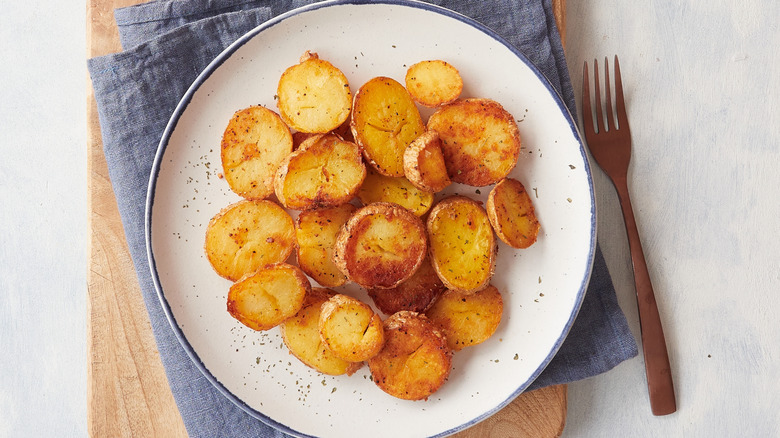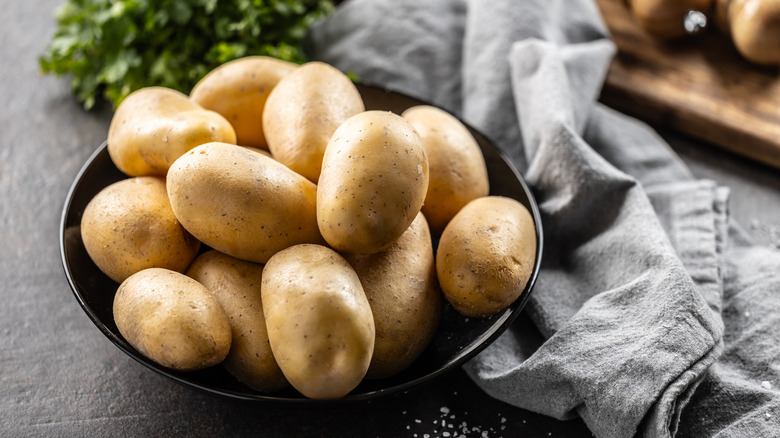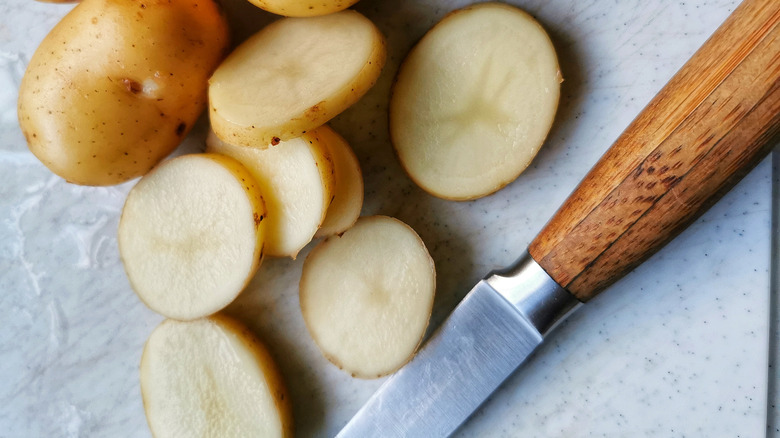What Exactly Are Cottage Fries And What Makes Them Unique?
A standout member in the fry family, cottage fries are so easy to make that it's a wonder they aren't a staple at every meal, buffet, and snack table. The potatoes are cut into rounds instead of being sliced into spears or shredded, and typically drizzled with oil and baked instead of being deep fried. Served salted and hot, cottage fries are a hearty and cozy side dish or afternoon snack that can be prepared in 30 minutes with just a handful of ingredients. They're inexpensive to make and offer a different take on traditional fries.
Cottage fries have a fluffy center and crispy edges that give them a rustic charm that begins with russet potatoes. The small, flat rounds are traditionally oven-baked but can be fried in a pan or cooked in an air fryer. Their light flavor offers endless options for dipping sauces, making cottage fries a great centerpiece for the snack bar on game days, birthdays, and holiday parties. Accompany them with ketchup, honey mustard sauce, your favorite niche barbecue sauce, or an easy homemade comeback sauce. Cottage fries are a great side dish on their own and can be dressed up as loaded fries or a unique take on hearty nachos.
What is the history of cottage fries?
Cottage fries are part of America's early history, but their roots can be traced to an 18th century campaign to popularize potatoes in France, where the vegetable was considered poisonous and illegal. The campaign was spearheaded by French army pharmacist, Antoine-Augustin Parmentier, who was captured during the Seven Years War and held in a Prussian prison, where he survived on potatoes for three years. Once released, he returned to France on a mission to popularize the potato as a solution to famine. The potato promotion was multi-faceted, using fashion, food, and influential people to change public opinion and eventually legalize potatoes in France.
Central to the pro-potato campaign were extravagant potato-themed dinners that featured show-stopping fanfare and around 20 courses of potatoes served different ways, including the first cottage fries. Guests at these dinners included Benjamin Franklin and Thomas Jefferson, the latter eventually serving an early version of cottage fries at White House dinners during his presidency.
Cottage fries were quickly adopted into American cuisine and somewhere along the line received their official name. Likely, the fried rounds were renamed to distinguish them from the fried potato spears gaining popularity in France. The name is said to come from the way the sliced potato rounds lay, which looks like the pattern of a cottage roof. Others say the name could come from the fact that the hearty dish became popular at dinner tables in the cottages of everyday citizens.
How do you make and serve cottage fries?
To make perfect cottage fries you must start with the right potato, as not all potatoes are created equally. Sure, you'll get the same hearty feel from most spuds, but they have varying starch contents that make them each ideal for different kinds of dishes. Red potatoes, for instance, are great for roasting but create a gummy, stickier version of mashed potatoes than Yukon Golds. Russet potatoes make the best cottage fries. Using other kinds of potatoes will give you cottage fries that are denser in the center, but the higher starch content in russets will yield fries that are fluffy in the center and crispy on the edges.
To make traditional cottage fries, bake sliced russet potato rounds drizzled in olive oil and seasoned with garlic, salt, pepper, and paprika. But that's just the starting point for the flavor possibilities. Season cottage fries with cayenne and herbes de Provence, fresh basil, oregano, or thyme, or test out an uncommon spice to cook with in your kitchen, like green cardamom, which will provide a sweeter take to the dish. Add bacon and onion for extra flavor or create a spicy version with fresh jalapeño slices. Make loaded cottage fries with sour cream, chives, and cheese or infuse an Italian twist by topping them with Parmesan, Roma tomatoes, mushrooms, and bell pepper.


